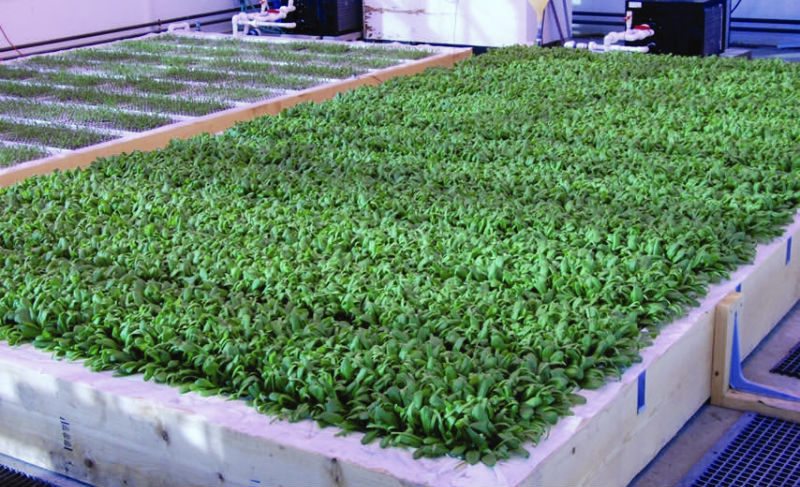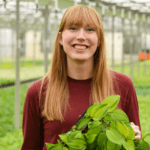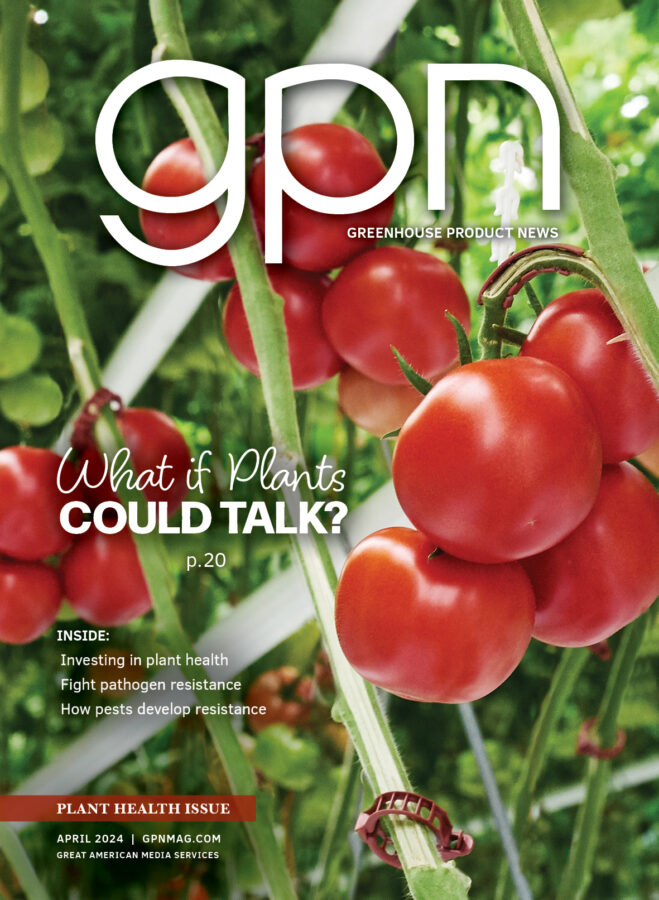
Arkansas leads national effort to improve disease resistance in spinach
Versatile and dense in nutrients, spinach has become one of the nation’s most popular leafy greens. Unfortunately, spinach is also well-liked by fungal enemies on the farm.
Fusarium wilt, downy mildew, white rust and two emerging leaf spot diseases — anthracnose and Stemphylium — decrease spinach cultivation productivity, marketability and sustainability. That’s why a multi-state team of scientists led by faculty with the University of Arkansas System Division of Agriculture was recently awarded a $3.57 million grant by the USDA’s National Institute of Food and Agriculture Specialty Crop Research Initiative to expedite the development of spinach cultivars that are resistant to those fungal pathogens.
“When you have a spinach that is resistant to these pathogens, you can use less fungicide, which is better for everyone, the soil and the plant,” said Ainong Shi, vegetable breeder and associate professor of horticulture with the Arkansas Agricultural Experiment Station, the research arm of the Division of Agriculture.
Shi is the principal investigator of the four-year project, which builds on other USDA-funded projects in Arkansas associated with developing fungal disease resistant spinach. The previous projects focused on steps to move research and development from conventional breeding practices to molecular breeding by screening spinach cultivars for resistance on the genetic level before they are grown in field trials.
Investigators for the team
Jim Correll, professor of entomology and plant pathology, and Gehendra Bhattarai, horticulture post-doctoral researcher, are co-principal investigators for the team. They are screening 600 spinach germplasm accessions for resistance to the five diseases included in this project. An accession is a distinct, uniquely identified sample of seeds or plants maintained in a germplasm collection.
The breeding lines come from the USDA National Plant Germplasm System; the University of Arkansas System Division of Agriculture; Texas A&M AgriLife Research; the USDA Agricultural Research Service in Salinas, California; and commercial cultivars and wild relatives.
Arkansas is home to the first public breeding program for spinach in the United States. The program began more than 50 years ago and has become a center for spinach research nationally.
Correll, who developed a spinach line resistant to white rust, noted that international seed companies have widely adopted Arkansas spinach germplasm. Commercially released spinach varieties and advanced breeding lines from the Arkansas program have also been used directly or as a parent in producing hybrid varieties. Spinach seed production with Arkansas germplasm occurs in Denmark, the U.S. Pacific Northwest and New Zealand, Correll said.
The U.S. is the second-largest producer of spinach, with increasing demand bolstered by more interest in health-conscious diets, Shi noted. China is the world’s largest spinach producer.
According to USDA data, U.S. receipts for spinach totaled $5.62 million in 2022. Because of its economic and nutritional importance, Shi said the spinach industry seeks continued development of improved, locally adapted germplasm and cultivars with resistance to major pathogens. Most U.S. spinach is grown in Arizona, California and Texas.
Grant collaborators
Collaborators on the grant include the following Texas A&M AgriLife Research faculty: Carlos A. Avila, associate professor of vegetable breeding; Juan Enciso, professor in the Biological and Agricultural Engineering Department; Larry Stein, associate department head, professor and extension horticulturist; and Samuel Zapata, associate professor and extension economist.
Research collaborators also include Beiquan Mou, research geneticist in the Crop Improvement and Protection Research Unit for the USDA-Agricultural Research Service in Salinas, California; Lindsey du Toit, department chair, Distinguished Professor of vegetable seed pathology and extension plant pathologist at Washington State University; Bindu Poudel-Ward, extension plant pathologist and plant diagnostician at the University of Arizona; and Susan B. Scheufele, production agriculture leader at the University of Massachusetts Amherst.
As part of their research, the scientists are looking to identify genomic regions that regulate disease-resistance mechanisms. The overall goal is to generate molecular breeding tools to expedite breeding for disease resistance and support growers in producing high-quality spinach sustainably with minimum losses to diseases.
USDA-NIFA Specialty Crop Research Initiative
The new USDA-NIFA Specialty Crop Research Initiative for spinach is grant number 2023-51181-41321 and titled “Development of germplasm resources and molecular breeding tools to combat endemic and emerging diseases in U.S. spinach production.” The research team has a website dedicated to the NIFA-supported spinach projects at spinachdb.org.
For more about Division of Agriculture research, visit the Arkansas Agricultural Experiment Station website. For more information on the Division of Agriculture, visit uada.edu/.


 Video Library
Video Library 




















